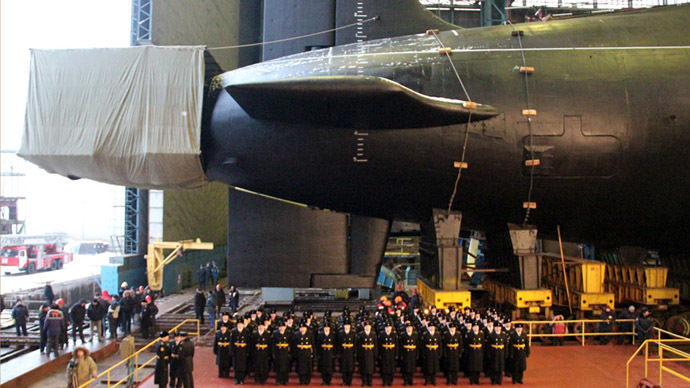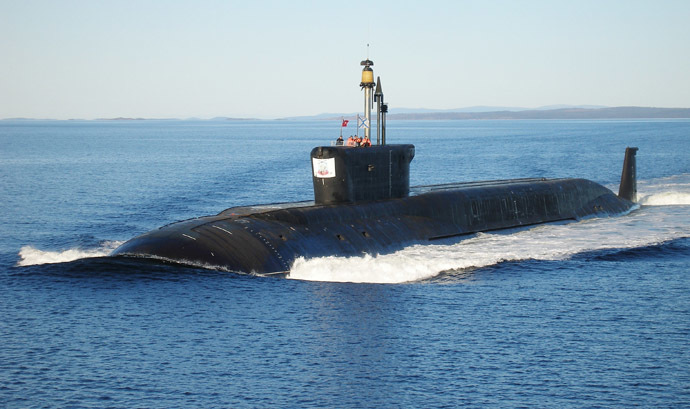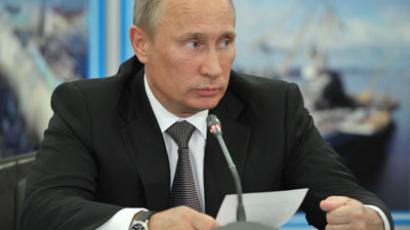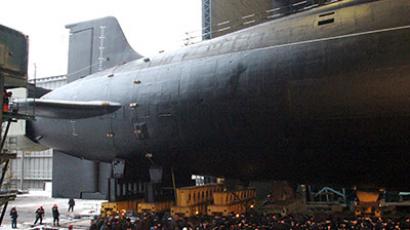Russia’s newest Borei-class nuclear sub completes sea trials

Russia's third Borei-class nuclear-powered strategic submarine, Vladimir Monomakh, has finished state sea trials, the vessel’s builders at Sevmash shipyard announced. The advanced vessel is virtually ready for deployment by the Navy.
Vladimir Monomakh has just returned from a trial run in the White
Sea, during which the sub successfully test-fired a Bulava
strategic missile.
"This is basically the last stage of the state trials. Now
the submarine's mechanisms will be re-examined, finishing work
completed, and spare parts, tools and accessories
furnished,’ Mikhail Budnichenko, Sevmash CEO, is cited by
Itar-Tass news agency.
According to Budnichenko, the new submarine might be officially
handed over to the Russian Navy as early as December 10.
Vladimir Monomakh is the third Borei-class – or Project 955
according to the Russian disambiguation – vessel to be built by
Sevmash, based at the Russian White Sea port of Severmorsk.
The fourth Borei-class submarine, Knyaz Vladimir, is currently
under construction at the shipyard, while the fifth one, Knyaz
Oleg, was laid down at Sevmash in July.

Knyaz Oleg will become the first of the upgraded Project 955A
submarines, which will boast smaller hulls and cons as well as
better acoustic characteristics and lower noisiness.
The first two Borei-class submarines, head vessel of the series
Yuri Dolgoruky and Aleksandr Nevsky, joined the Russian Navy in
2013.
By 2020, the Russian Defense Ministry plans to have eight
Borei-class submarines that should become the backbone of the
naval component of the country’s strategic nuclear deterrent.
Each Project 955 submarine, designed by the Rubin Naval Design
Bureau from Saint Petersburg, can carry up to 12 Bulava
intercontinental ballistic missiles. The advanced 955As are
designed to be armed with 16 SLBMs.
The safety measures at the subs include a rescue chamber, which
can host all 17 crew members.
A Borei-class submarine is 170 meters long and 13.5 meters wide
and can dive up to 450 meters.
According to the Russian military, Project 955 are
state-of-the-art submarines, featuring characteristics superior
to any submarine currently in service such as the ability to
cruise silently and be less detectable by sonars.
They have a compact and integrated hydrodynamically efficient
hull for reduced broadband noise and are the first to use
pump-jet propulsion among Russian submarines.
The Bulava missiles, which have an operational range of 10,000
kilometers, are able to carry 10 hypersonic, individually guided,
maneuverable nuclear warheads with a yield of 100–150 kilotons
each.














